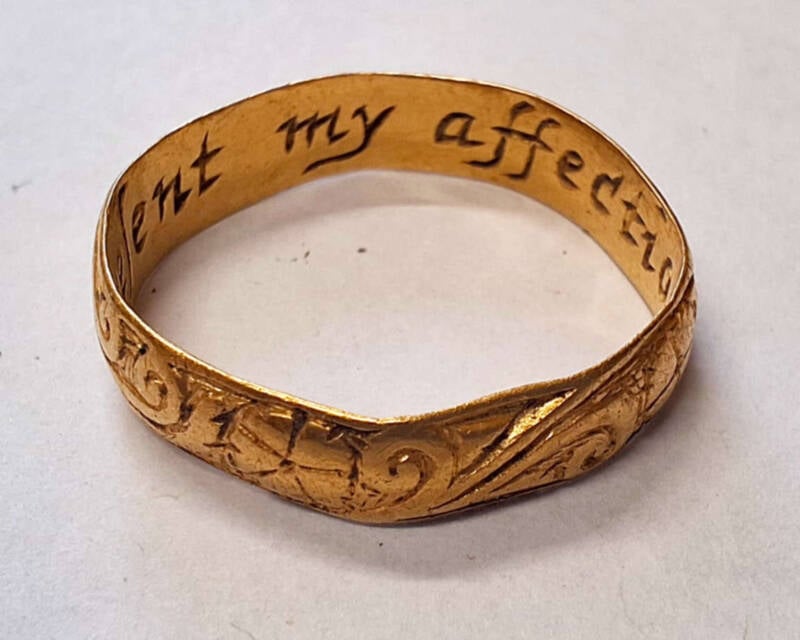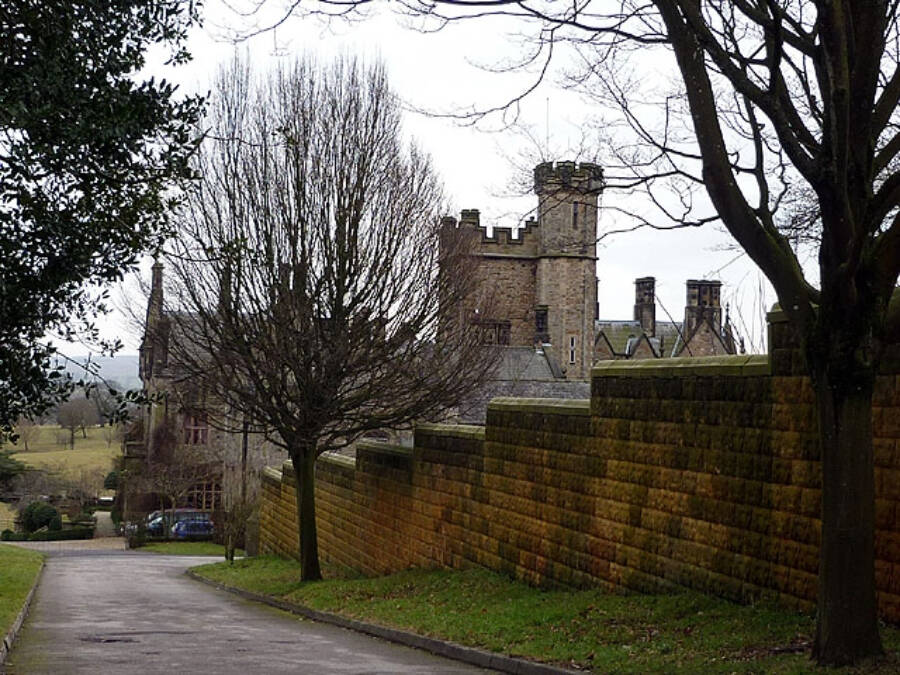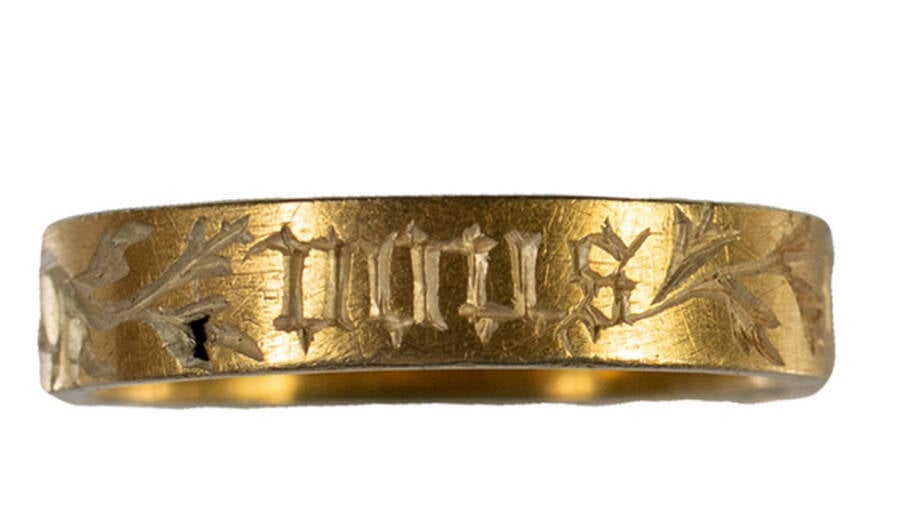The 300-year-old posy ring is inscribed with the words "present my affection."

Lancaster City Council/FacebookThe 17th-century lovers’ ring discovered near Lancaster, England.
Love is in the air at the historic Whittington Hall in the English county of Lancashire. In 2023, a metal detectorist searching near the grounds discovered a gold ring bearing the words “present my affection.”
An examination revealed it to be a posy ring that was exchanged by lovers sometime between 1650 and 1750. Though its original owners remain unknown, its inscription and craftsmanship serve as a timeless testament to love across centuries.
A Metal Detectorist Unearths A Gold Ring At Whittington Hall

Karl and Ali/Wikimedia CommonsWhittington Hall in Lancashire, where the ring was found.
In 2023, a metal detectorist was exploring the lands surrounding Whittington Hall near Lancaster, England. The historic country house was built in the early 1830s by architect George Webster for Thomas Greene, a British member of Parliament.
The home sits on five acres and features impressive exterior and interior designs, such as a large garden and elaborately decorated rooms. In 1967, it was added to England’s National Heritage List, making it a protected structure.
It was the estate’s rich history that led the metal detectorist to search nearby two years ago. And luckily, they did not go home empty-handed.
After unearthing a small metal object, the detectorist realized they had discovered a lovers’ ring, one that attests to a heartwarming 300-year-old romance.
Who Did The Lovers’ Ring Belong To?
After finding the ring, the metal detectorist declared the discovery to the Portable Antiquities Scheme (PAS), a program in England that allows people to report artifacts that may be culturally or historically significant. It was then given to the Lancaster City Museum.
Now, Lancaster City Council has announced the discovery to the public via a Facebook post.
According to experts, the centuries-old piece of jewelry was a posy ring. Unlike modern engagement rings, these were historically given by either partner at any stage in a romantic relationship.
The ring found at Whittington Hall was lovingly inscribed with the words “present my affection.” Similar rings, like one found in Essex in 2023, bear comparable declarations of devotion and love.

Colchester and Ipswich Museum ServiceA 15th-century ring bearing the inscription: “I desire to serve you.”
While nobody knows to whom this ring belonged, it stands as a testament to humanity’s shared fondness for love stories.
“The museum collections preserve our heritage, helping us to understand who we are, where we have come from and what makes this area special,” Nick Wilkinson, a city council member for Lancaster Regeneration and Local Economy, told the Lancaster Guardian. “So I am delighted that we can unveil this centuries old token of love and affection from Whittington on Valentine’s Day.”
The ring is also one of the few artifacts found in Whittington that dates back to the 17th century, making it an invaluable piece of Lancashire history.
“Whittington, which was once the head of a medieval lordship, is under-represented in the museum collections, so the museums are very pleased to have been able to acquire this ring,” Wilkinson explained.
Typically, the reward for finding a historical artifact is split between the discoverer and the landowner. However, in the spirit of love and generosity, Whittington Hall’s owner, Lord Reay, has waived his half of the proceeds.
After reading about the lovers’ ring discovered near an English country house, go inside the love story of Isidor And Ida Straus, the couple who refused to leave each other during the sinking of the Titanic. Then, learn about James Joyce’s racy letters to his wife, Nora Barnacle.





